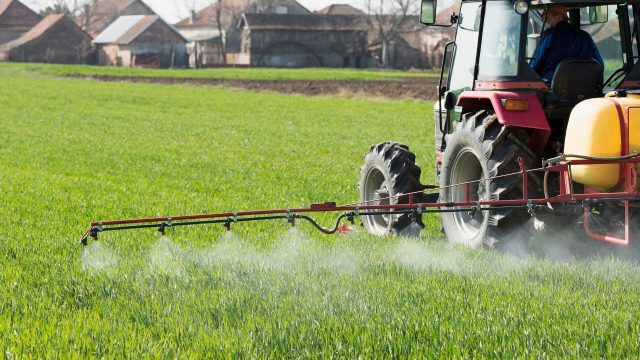29
Jul
Pesticides and Other Volatile Chemicals Cause Air Pollution Linked to Premature Deaths

(Beyond Pesticides, July 29, 2021) Between 340,000 and 900,000 premature deaths each year can be linked to air pollution caused by the release of volatile organic compounds, such as pesticides, paints, and cleaning agents, from anthropogenic sources. The findings, published in Atmospheric Chemistry and Physics, included an international team of over 50 scientists, lead by researchers at the University of Colorado, Boulder. “The older idea was that to reduce premature mortality, you should target coal-fired power plants or the transportation sector,” lead author of the study Benjamin Nault, PhD, said. “Yes, these are important, but we’re showing that if you’re not getting at the cleaning and painting products and other everyday chemicals, then you’re not getting at a major source.”
While the connection between air pollution and direct sources of particulate matter in the atmosphere have a large body of supporting literature, there is little understanding of the impact caused by other chemical products that humans use. Those direct sources, such as exhaust fumes from cars and the smoke stacks from coal-fired power plants, are generally regulated by government agencies in the U.S. and in other countries. Even secondary sources of pollution – such as nitrous oxides caused when fumes and exhaust react with sunlight in the atmosphere – are subject to government oversight. These chemicals form a class of pollutants caused PM2.5, which is particulate matter that is smaller than 2.5 micrometers (roughly 1/100th of the size of a grain of sand). In sum, at least 3 to 4 million premature deaths can be attributed to PM2.5 pollution.
This new research finds that anthropogenic secondary organic aerosols (ASOAs), including intermediate and semi-volatile organic compounds like pesticides, paints, cleaners, and other personal care products, are a major, underrepresented source of PM2.5 mortality. To come to that conclusion, researchers analyzed data from nearly a dozen air quality studies carried out across the globe since the turn of the century, including particle pollution data and chemical usage derived from the National Oceanic and Atmospheric Administration, and the National Aeronautics and Space Administration. Results showed that the ASOAs corresponded closely with the use and release of organic compounds from anthropogenic sources.
The data confirms previous research conducted by a subset of study coauthors in 2018, which found volatile chemicals to be the largest source of urban petrochemical air pollution. “What’s new here,” said co-author Brian McDonald, PhD, “is that we are showing this is an issue in cities on three continents, North America, Europe and east Asia.”
A separate 2018 study published by researchers at University California, Davis found nitrogen fertilizer to be a major source of air pollution, caused by the release of nitrous oxides from fields farmed with synthetic chemicals.
There is growing recognition in the scientific literature that pollution sources once thought to be minor, are causing much larger problems than expected. “Because this effect has been thought to be small, it hasn’t been targeted for control,” study coauthor Jose-Luis Jimenez, PhD said. “But when you take the atmospheric chemistry into account and put it into a model, you find that this particular source is killing a lot of people.”
Premature death from air pollution is the end result after a life of symptoms that can be progressively debilitating. Asthma and other respiratory ailments, heart disease, cancer, nervous system damage, and other chronic diseases are all linked to exposure to air pollution.
“If you care about air pollution impacts on health and mortality, you have to take this problem seriously,” Dr. Jimenez said. The paper provides additional reason for states and local communities to pass policies that stop the unnecessary use of toxic pesticides in land management and farming practices. The use of pesticides in cosmetic weed control, wide area aerosol mosquito spray, and on farms by airplane and backpack sprayer all ultimately contribute to the levels of PM2.5 air pollution in the atmosphere.
Pesticides are in the air we breathe, the water we drink, and the food we eat. With an ever-growing body of scientific evidence showing these chemicals to be more harmful than ever previously thought, it is critically important that states and communities embrace cleaner, safer organic practices that protect our environment and the safety of our food supply. There are a range of ways to get active in your community to stop unnecessary pesticide pollution. For information on how to start a local Beyond Pesticides campaign, see the Tools for Change webpage and reach out to Beyond Pesticides at [email protected] or 202-543-5450.
All unattributed positions and opinions in this piece are those of Beyond Pesticides.
Source: University of Colorado, Boulder press release, Atmospheric Chemistry and Physics










